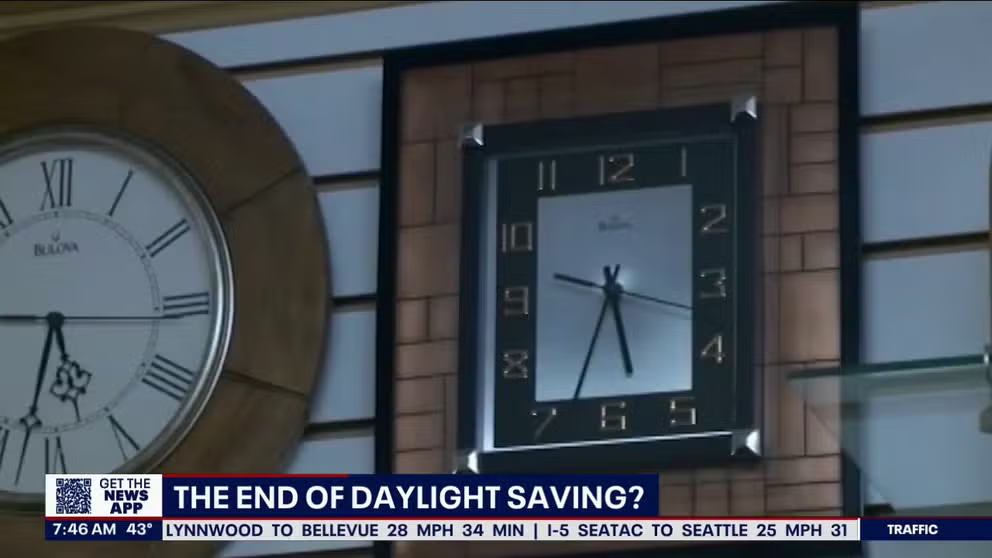Could 2022 be the last year we 'fall back'?
In March, the Senate unanimously approved a measure that would make daylight saving time permanent across the United States in November 2023.
The end to daylight saving?
FOX 13 discusses the possibility of Congress erasing fall and spring time changes with Senator Patty Murphy (D-WA).
At 2 a.m. on Nov. 6, the vast majority of America will set clocks back one hour, but could it be the last time?
There’s a growing movement in the U.S. to stop the act of switching clocks back and forward every fall and spring. A recent poll from Monmouth University shows the majority of Americans, about 61%, would get rid of the twice-yearly time change, while about a third want to keep the practice in place.
Most people who want a single time year-round would rather have a later sunrise and a later sunset, which would make daylight saving time permanent. Only 13% of people polled favor keeping standard time, the period from November to March.
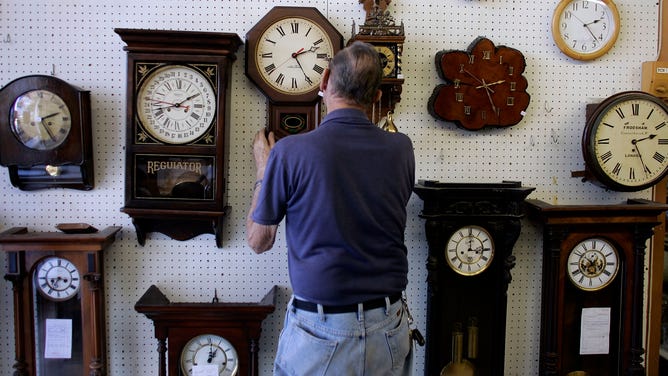
Howard Brown hangs a clock he repaired at Brown's Old Time Clock Shop in Florida.
(Joe Raedle / Getty Images)
Lawmakers are catching up to the notion of eliminating the time change. In 2018, Florida became the first state to enact legislation that would make daylight saving time permanent if Congress approves the change, and since then 19 other states have followed suit.
This year, the U.S. Senate unanimously passed a measure to make daylight saving time permanent, but it has a ways to go before becoming law.
THE HISTORY OF DAYLIGHT SAVING TIME
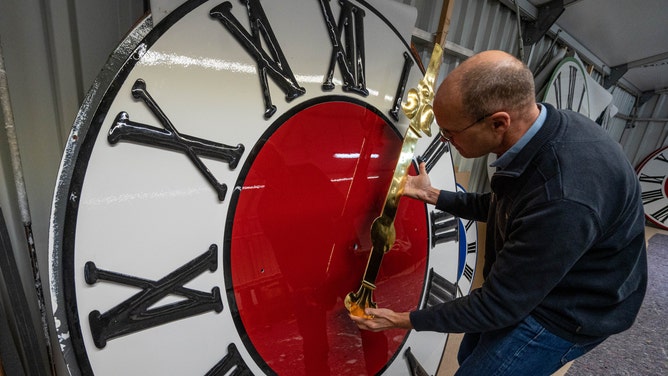
The managing director of a tower clock manufacturer by hand twice a year.
(Armin Weigel / Picture Alliance / Getty Images)
What is daylight saving time?
Daylight saving time is defined as a period between spring and fall when clocks in most parts of the country are set one hour ahead of standard time. According to federal law, it always starts on the second Sunday in March and ends on the first Sunday in November.
The practice of falling back in the U.S. started in 1918 during World War I as a way to conserve fuel. By moving the clocks ahead an hour, backers believed the country could divert a bit of coal-fired electricity to the military instead of using it for an hour of home power. It was reenacted in World War II.
It was repealed again when the war ended, but some states — and even some cities — continued to observe daylight saving time while others kept standard time year-round. That meant driving relatively short distances could result in a time change.
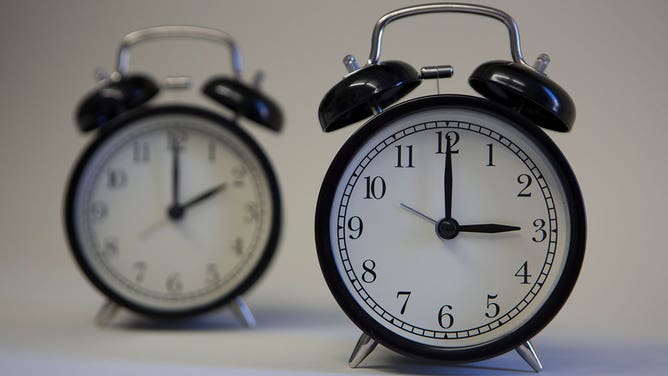
Alarm clocks with the clock pointers to 2 o'clock (left) and 3 o'clock (right).
(Ulrich Baumgarten / Getty Images)
By 1966, airlines and other businesses tired of such quirks and pushed Congress to pass the Uniform Time Act. It codified daylight saving time, although it has been periodically modified.
Hawaii and Arizona (except the Navajo Nation) are the only two states in the nation that don’t follow time change. People in Puerto Rico, the U.S. Virgin Islands, American Samoa, Guam and the Northern Marianas also don’t change their clocks.
On the West Coast, if the U.S. were to make the switch permanently to DST, for Seattle it would mean the sun would rise at 8:57 a.m. on Jan. 1 and set at 5:28 p.m. Farther south in Los Angeles, there would be a 7:58 a.m. sunrise and a 5:54 p.m. sunset.
What is the Sunshine Protection Act?
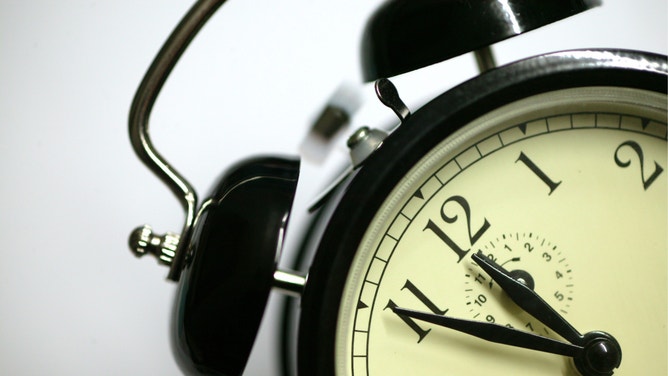
(Ulrich Baumgarten / Getty Images)
In March, the Senate unanimously approved a measure that would make daylight saving time permanent across the United States in November 2023.
The bipartisan bill, named the Sunshine Protection Act, would ensure Americans would no longer have to change their clocks twice a year. But the bill still needs approval from the House, and the signature of President Joe Biden, to become law.
Members of Congress have long been interested in the potential benefits and costs of daylight saving time, but whether the House will take up the Sunshine Protection Act this year is still up in the air.

Horologist James Harris checks a selection of electric and mechanical clocks and meters at The Clockworks museum in West Norwood, London where they have the task of putting their collection of clocks forward and back an hour.
(Kirsty O'Connor/PA Images / Getty Images)
What are the arguments for making daylight saving time permanent?
Lawmakers like U.S. Sen. Marco Rubio, R-Florida, argue that permanent DST could reduce car crashes, pointing to findings from the American Journal of Public Health and the Journal of Safety Research.
"There's some strong science behind it that is now showing and making people aware of the harm that clock switching has," Rubio said on the Senate floor. "We see an increase in heart attacks and car accidents and pedestrian accidents in the week[s] that follow the changes.
"The benefits of daylight saving time have also been accounted for in the research. For example, reduced crime as there's light later in the day. We've seen decreases in child obesity, a decrease in seasonal depression that many feel during Standard Time," he continued.
DAYLIGHT SAVING TIME CAN MESS WITH YOUR HEALTH
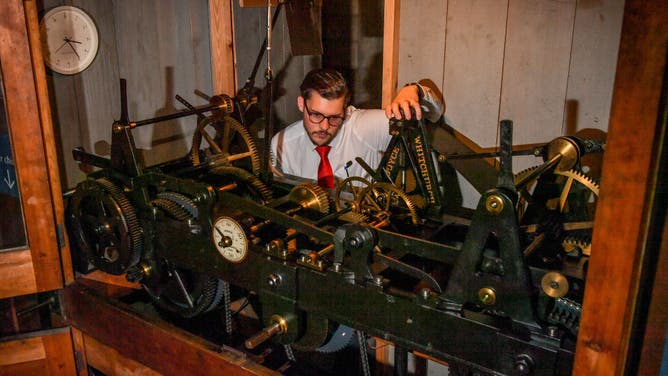
Salisbury Cathedral, Verger Joseph Davies checks and adjusts the chiming clock, dated 1883, that strikes the bells at the top of the clock tower, as part of the maintenance and adjustments ahead of the clocks going back an hour to mark the end of summertime.
(Ben Birchall / PA Images / Getty Images)
But scientists who disagree with those findings say traffic accidents actually increase in the weeks after switching to daylight saving time, when people are still adjusting to losing an hour of sleep. Some scientists say it can take weeks for people to recover from the change, something they call "social jet lag."
"It really messes people up," said Steve Kay, the director of the University of Southern California Michelson Center for Convergent Bioscience.
"It affects human performance. The data has been clear in terms of traffic accidents and there’s also data that it’s not great in terms of cardiovascular health: Heart attacks go up."
GROWING MOVEMENT TO MAKE DAYLIGHT SAVING TIME PERMANENT
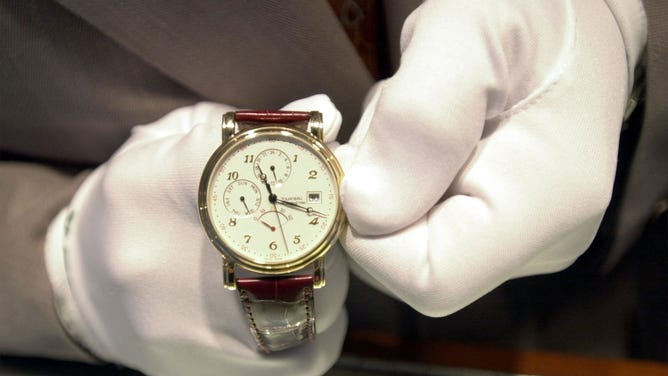
Tourneau Time Machine employee Pellegrino John Bongiovi sets one of the 20,000 watches in the Manhattan watch store ahead an hour for the onset of daylight saving time in New York City, N.Y.
(Chris Hondros / Getty Images)
Which states want to make daylight saving time permanent?
According to the National Conference of State Legislatures, 20 states have enacted legislation or passed resolutions to make daylight saving time permanent pending congressional approval. In some states, their law is dependent on surrounding states enacting the same law.
The 20 states that have voted in favor of year-round daylight saving time are:
- Alabama
- California
- Colorado
- Delaware
- Florida
- Georgia
- Idaho
- Kentucky
- Louisiana
- Maine
- Minnesota
- Mississippi
- Montana
- Ohio
- Oregon
- South Carolina
- Tennessee
- Utah
- Washington
- Wyoming
FOX’s Chris Williams and The Associated Press contributed to this report.
